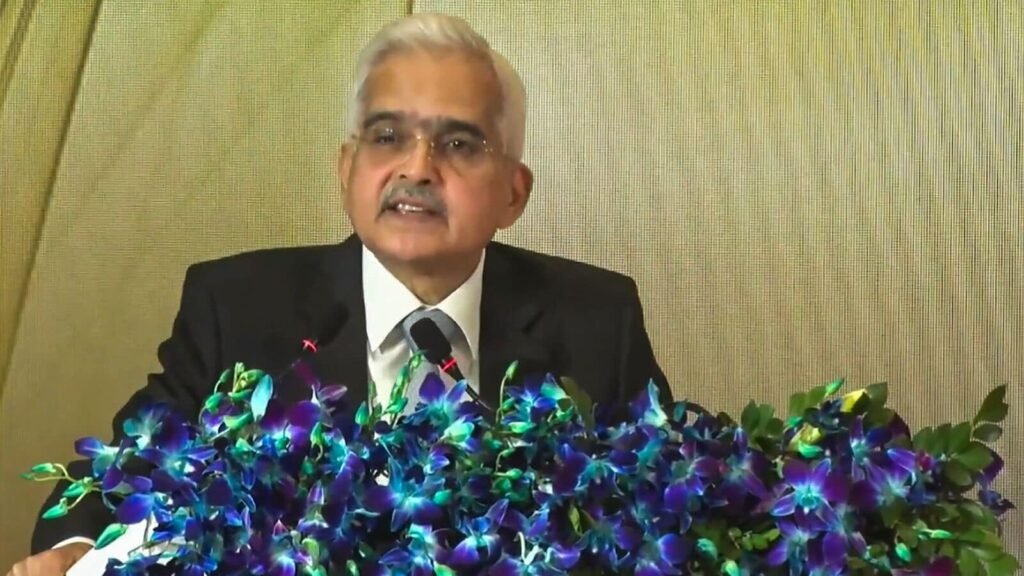‘Growing AI use raises cyberattack risks, could threaten financial stability’

Mumbai: Reserve Bank of India (RBI) governor Shaktikanta Das on Monday warned that a growing reliance on artificial intelligence raises the risks of cyberattacks and data breaches, potentially threatening the country’s financial stability.
While technological advancements such as AI and machine learning (ML) have opened up new avenues of business and profit expansion for financial institutions, these technologies also pose financial stability risks.
“The heavy reliance on AI can lead to concentration risks, especially when a small number of tech providers dominate the market. This could amplify systemic risks, as failures or disruptions in these systems may cascade across the entire financial sector,” Das said at the RBI@90 High-Level Conference organised by the central bank in New Delhi. His speech was later released on the central bank’s website.
Further, AI’s opacity makes it difficult to audit or interpret algorithms that drive decisions, which could potentially lead to unpredictable consequences in the markets, Das said, adding that banks and financial institutions must put in place adequate risk mitigation measures against all these risks.
“In the ultimate analysis, banks have to ride on the advantages of AI and Bigtech and not allow the latter to ride on them,” according to the speech posted on the RBI website.
Das also touched upon the challenges from growing digitalisation of financial services, citing the example of liquidity stress caused by rumours and misinformation that can “spread very quickly”, given deep social media presence and vast access to online banking and instant money transfers. “Banks have to remain alert in the social media space and also strengthen their liquidity buffers,” he said.
RBI, in a recent draft circular, had proposed 5% additional liquidity buffers for digitally-linked bank deposits to mitigate risks from quick withdrawals through internet and mobile banking. While banks have sought some relaxation on this, the final norms are still awaited.
Financial stability risks
Das said global central banks today face multiple emerging risks to financial stability. The foremost is that the divergence in global monetary policies—from monetary easing in some economies to tightening in a few and a pause in several other economies—could lead to volatility in capital flows and exchange rates, which may disrupt financial stability.
“We saw a glimpse of this with the sharp appreciation of the Japanese Yen in early August which led to disruptive reversals in the Yen carry trade and rattled financial markets across the globe,” he said.
Second, the rapid expansion in private credit markets with limited regulation poses significant risks to financial stability, particularly since they have not been stress-tested in a downturn.
His comments come after the central bank’s recent warnings around unscrupulous growth in certain segments of unsecured and secured loans such as gold, mortgage and microfinance by non-bank lenders, especially those backed by private equity or venture capital players.
Das also highlighted risks emanating from higher interest rates, aimed at curtailing inflationary pressures, such as increase in debt servicing costs, financial market volatility, and risks to asset quality.
“Stretched asset valuations in some jurisdictions could trigger contagion across financial markets, creating further instability. The correction in commercial real estate (CRE) prices in some jurisdictions can put small and medium-sized banks under stress, given their large exposures to this sector,” he said, adding that the interconnectedness between CRE, non-bank financial institutions, and the broader banking system amplifies these risks.
Another challenge being faced by central banks today is the soaring public debt, which is becoming a binding constraint on monetary policy in several countries. Global public debt has surged post the pandemic to 93.2% of GDP in 2023 and is likely to increase to 100% of GDP by 2029.
In major economies, debt-GDP ratios are on an upward trajectory, raising concerns about their sustainability and their negative spillovers for the broader global economy. In several other countries, central banks are willy-nilly expected to facilitate financing of such huge public debts, the impact of which is felt by emerging and developing economies and even other advanced economies.
“These spillovers can be expected to accentuate as capital flows dwarf trade flows. Quite naturally, emerging economies are having to strengthen their policy frameworks and buffers to manage this external flux and mitigate its adverse consequences,” he said.
Cross-border payments
The cross-border payments market has grown significantly on the back of a surge in the volume of cross-border worker remittances, gross flows of capital, and cross-border e-commerce. Thus, there is tremendous scope to significantly reduce the cost and time for remittances—considered the starting point for many emerging and developing economies for cross border peer-to-peer (P2P) payments, Das said.
“India is one of the few large economies with a 24×7 real time gross settlement (RTGS) system. The feasibility of expanding RTGS to settle transactions in major trade currencies such as USD, EUR and GBP can be explored through bilateral or multilateral arrangements,” Das said, adding that India and a few other economies have already commenced efforts to expand linkage of cross-border fast payment systems both in the bilateral and multilateral modes.
These include Project Nexus, a multilateral international initiative for instant cross-border retail payments by linking domestic Instant Payment Systems (IPSs) of four Asean (Association of Southeast Asian Nations) countries (Malaysia, the Philippines, Singapore, and Thailand) and India. Under bilateral arrangements, cross-border payment linkages have already been established by India with Singapore, UAE, Mauritius, Sri Lanka and Nepal, among others.
The value of global cross-border payments is estimated to surpass $250 trillion by 2027. The global cross-border B2C e-commerce market was valued at $889 billion in 2022 and is estimated to grow by more than six times to $5.6 trillion in revenue by 2030, as per reports cited by RBI.
Here, central bank digital currencies (CBDCs) could play an important role, Das said, adding that India, under its wholesale and retail CBDC pilots, is experimenting with value-added services such as programmability, interoperability with UPI-retail fast payment system and development of offline solutions for remote areas and underserved segments of the population.
Going ahead, harmonization of standards and interoperability would be important for CBDCs for cross-border payments and to overcome financial stability concerns associated with cryptocurrencies. While a key challenge could be that countries may prefer to design their own systems, this could be overcome by developing a “plug-and-play system” that allows replicability of India’s experience while also maintaining the sovereignty of respective countries, Das said.
Catch all the Industry News, Banking News and Updates on Live Mint. Download The Mint News App to get Daily Market Updates.
MoreLess








